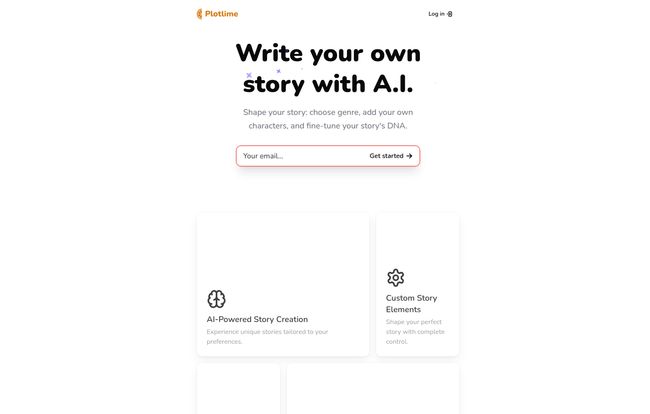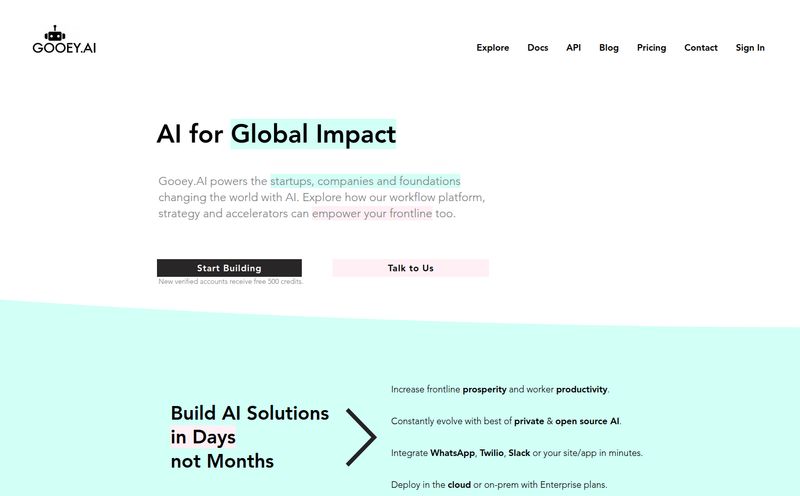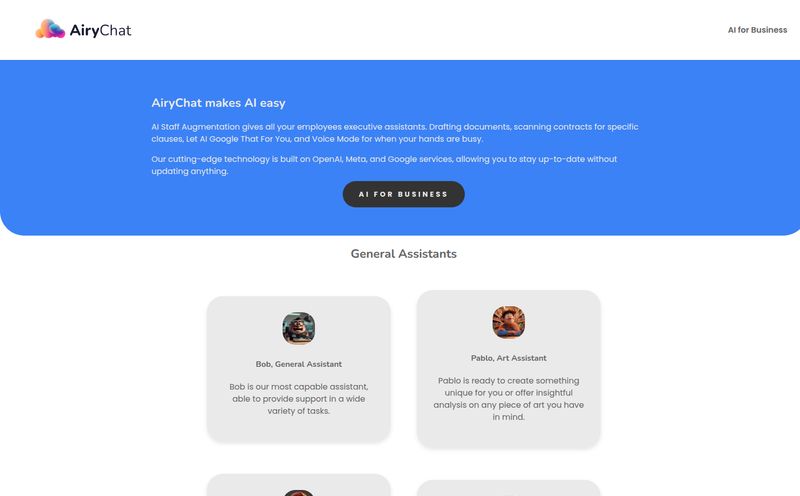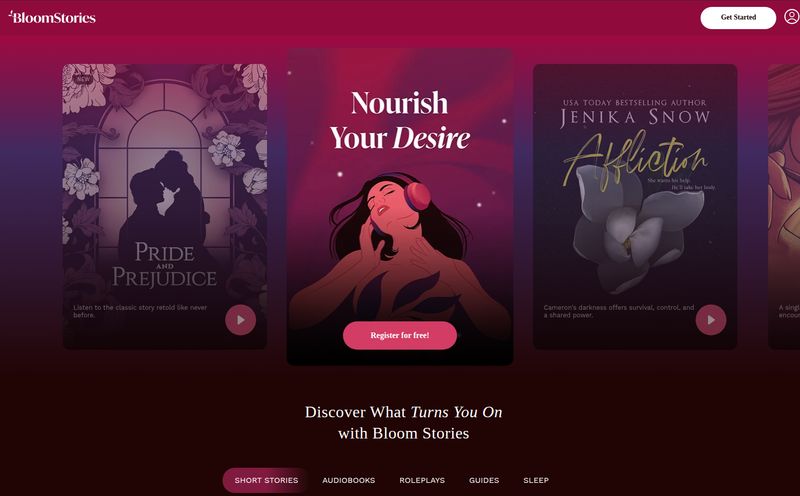We've all been there. Staring at a blank page, the cursor blinking mockingly, your brilliant story idea suddenly feeling... less than brilliant. Writer's block is the worst. It’s like your creative engine has stalled on the highway of imagination. For years, the only solution was to push through, drink more coffee, or maybe just go for a walk and hope for a lightning bolt of inspiration.
But the tech world, in its relentless march forward, has tossed a new tool into the ring: AI. We’ve seen it write code, create jaw-dropping art, and answer just about any question under the sun. So, it was only a matter of time before it came for storytelling. Enter Plotlime. I stumbled across it recently and, as someone who lives and breathes content, my curiosity was definitely piqued. An AI that helps you write stories? From scratch? I had to see what this was all about.

Visit Plotlime
So What is Plotlime, Really?
At its heart, Plotlime is a web-based platform that positions itself as your creative co-pilot. It’s not just another GPT-4 wrapper with a fancy skin. It’s designed specifically as a storytelling sandbox. You start with a core idea or a theme—say, 'Friendship' or 'Greed'—and then you begin layering in your own custom elements. You create characters with unique traits, you build the world they live in, and then you let the AI take the wheel and start generating the narrative.
Think of it less like a vending machine for stories and more like a collaborative partner who’s really, really good at connecting the dots. It’s an intriguing proposition, especially for those of us who have great concepts but sometimes get bogged down in the nitty-gritty of prose.
Breaking Down the Key Features
Plotlime isn't just a one-trick pony. It bundles a few interesting tools together that make the entire creative process feel more complete.
Your Personal AI Ghostwriter
The core of the experience is, of course, the AI-powered story creation. You provide the prompts, the characters, the setting, and it weaves them into a coherent narrative. From what I’ve seen, the quality is pretty impressive for getting a first draft off the ground. It’s not going to write the next Pulitzer winner on its own, let's be clear about that. But for rapidly prototyping an idea or getting past that initial hump? It's fascinating. I threw a ridiculous concept at it—an SEO consultant who discovers a magical keyword that ranks him in another dimension—and it actually ran with it. The result was a bit campy, sure, but it was a start! Something I could actually work with.
Building Your World, Brick by Digital Brick
This, for me, is the most important feature: custom story elements. One of my biggest gripes with early AI writers was the generic output. Everything felt sanitized and predictable. Plotlime seems to understand this pain point by giving you a good amount of control over the ingredients. You’re not just picking 'a brave knight'; you're defining your knight, Sir Reginald the Slightly-Anxious, who has a fear of butterflies. This level of personalization is what separates a potentially unique story from AI-generated mush. The more detail you feed it, the better the output. Garbage in, garbage out, as the old saying goes.
From Text to Soundscape
Here’s a feature I didn’t expect but immediately loved: audio story transformation. Once your story is written, you can convert it into an audio experience. This is a brilliant move. We're living in an audio-first world, with podcasts and audiobooks dominating commutes and workouts. Being able to generate not just the text but also a shareable audio version is a huge plus. It’s perfect for creating short stories for kids, a quick audio drama for your social channels, or just hearing your own story read aloud to catch awkward phrasing.
A Picture is Worth a Thousand Prompts
And then there's the AI-generated cover art. If you've ever tried to self-publish anything, you know that a good cover can make or break your work. It's the first thing anyone sees. Hiring a designer costs money, and fumbling through Canva can eat up hours. Plotlime integrates AI art generation to create a unique cover for your story. It’s a bit like having Midjourney or DALL-E baked right into the platform. This completes the package, turning your text file into something that feels like a real, finished product.
The Creative's Dilemma: My Honest Take on Plotlime
Alright, so it sounds cool. But is it actually useful? As with any tool, there are two sides to this coin.
"AI should be a tool, not a crutch. It's here to augment our creativity, not replace it. The moment we stop thinking for ourselves is the moment the stories lose their soul."
What I Loved
I genuinely had fun playing with Plotlime. There's a certain magic to seeing your ideas fleshed out in seconds. It’s an incredible tool for brainstorming and overcoming inertia. For parents who want to create bedtime stories on the fly, for D&D Dungeon Masters who need a quick backstory for an NPC, or for content creators who need to pump out short, thematic narratives, this could be a game-changer. The speed is undeniable. The integration of text, audio, and art into one platform is also just... smart. It shows a real understanding of the modern creator's workflow.
The Caveats (And They're Important)
Now, for the other side. My main concern is the potential for creative laziness. It’s tempting to just let the AI do all the work, which can lead to stories that feel soulless or formulaic. The true art of writing is in the unique voice, the unexpected turn of phrase, the subtle subtext. An AI, at least for now, struggles with that. It mimics patterns, it doesn't have lived experiences to draw from. So, if you use Plotlime, you have to see it as a collaborator, not a replacement. You’re the director, the editor, the soul of the project. The AI is your very fast, sometimes un-imaginative intern. You still have to do the hard work of refining and polishing the text to make it truly yours. There's also the fact that you need to log in to get the full feature set, which is a minor hurdle but still a step in the funnel.
Who Is This Really For?
So, who should drop what they're doing and try Plotlime? I see a few key groups.
- Hobbyist Writers: Anyone who loves writing but struggles to find the time or motivation. It's a great way to keep the creative juices flowing.
- Parents and Educators: Creating custom stories for kids is a fantastic application. You can make your child the hero of their own adventure.
- Tabletop RPG Players: Dungeon Masters and Game Masters, this is your new best friend for generating lore, character backstories, and quest hooks.
- Content Creators: If you need short-form narrative content for social media, a podcast, or a YouTube channel, this can dramatically speed up your production time.
Professional novelists? Probably not as a primary writing tool, but maybe for brainstorming? I could see that. But for its target audience, it hits a pretty sweet spot.
The Big Question: What's the Price?
This is the part where I'd normally break down the pricing tiers. But here's the thing—Plotlime is a bit mysterious about it. As of this writing, there's no public pricing page that I could find (the link on their site seemed to be a 404). The main call-to-action is to sign up with your email to get started. This usually suggests a freemium model, where you get basic access for free and then pay for premium features, more credits, or higher limits. My advice? Sign up for a free account, play around with it, and see what the limitations are. Things in the AI space change fast, so they might have a pricing page up by the time you read this.
Frequently Asked Questions
I snooped around their FAQ and pulled some of the most common questions you might have.
- What exactly is Plotlime?
- It's an AI platform designed to help you create personalized stories. You provide the characters, theme, and setting, and the AI generates the narrative, complete with custom cover art and an audio version.
- Do I need any writing experience to use it?
- Nope. That's kind of the point. It's built for both experienced writers and complete beginners. If you have an idea, you can use Plotlime.
- Can I mix multiple genres in one story?
- The platform is designed around choosing a primary theme or genre, but you can definitely influence the tone with your custom character and setting descriptions to create a hybrid feel. Think 'sci-fi comedy' or 'fantasy romance'.
- How does Plotlime ensure the story is coherent?
- The AI is trained on massive datasets of literature and text, allowing it to understand narrative structure, character arcs, and pacing. It uses your inputs as a guide to maintain coherence throughout the story.
- Is it really free?
- It appears to have a free entry point. You'll likely need to create an account to see the full scope of what's offered for free versus what might be part of a future paid plan.
Final Thoughts: A Tool, Not a Magician
So, what's the verdict? Plotlime is a seriously cool piece of tech. It’s fun, accessible, and genuinely useful for a specific set of creative tasks. It lowers the barrier to entry for storytelling and provides an all-in-one package that’s hard to beat for convenience.
But it's not magic. It won’t make you a great writer overnight. The soul of a story still comes from the human behind the keyboard. Use it as a springboard, a partner, a cure for the blinking cursor of doom. But never forget that your voice, your ideas, and your weird, human imperfections are what will make any story truly worth reading. Now if you'll excuse me, I have to go finish my story about Sir Reginald and his mortal fear of butterflies.
Reference and Sources
- Plotlime Official Website
- WIRED - The AI Art Gold Rush Is Here (For context on AI-generated art)



